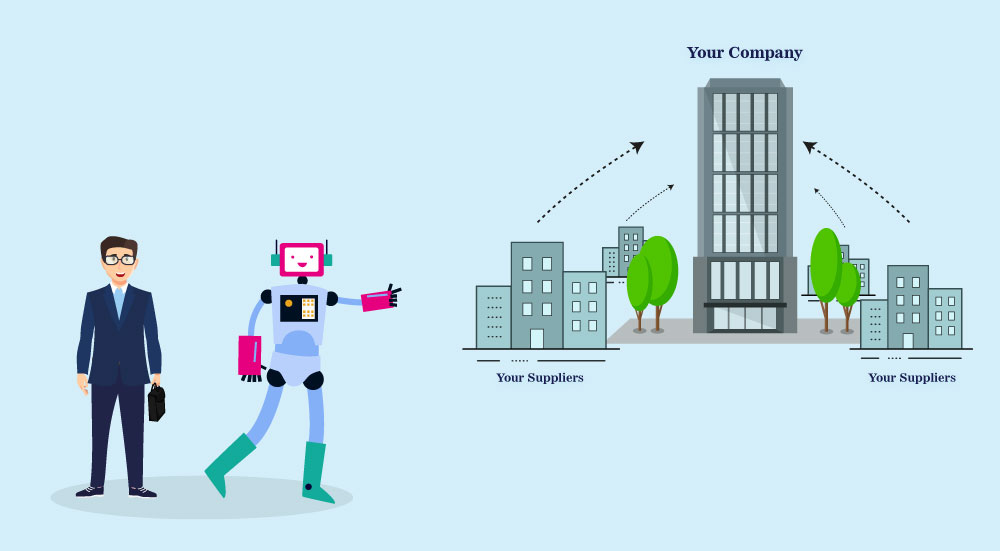
Read. Learn. Act -
Your Go-To Resource for Sustainability Stories
So you have your carbon footprint data pack, now what?

What happens after we analyse your organisations data and provide you with your data package? How will the data-pack result in cutting your carbon emissions, large cash savings and a realistic net zero plan? If you’re curious, this article is for you.
Let’s look at the first obvious benefits; you will receive a large excel workbook with all of your suppliers, ranked from biggest to smallest, and all your purchases, ranked from highest expenditure and carbon to least. We apply a carbon factor to the cost of the item, based on where it was produced and everything we know about it, to work out the associated carbon as accurately as possible. This spreadsheet is very easy to go through. Compared to your finance system it will be much simpler and allow anyone to see exactly what is being purchased and the impact these purchases are having on the organisations carbon. We provide your data sheets in excel because we find most companies are already very familiar with it and can easily make sense of it plus fit it into their own documents.
With this you have two paths available, which we recommend following up simultaneously. The first is internal (primarily your organisations activities) and the second is external (primarily your suppliers activities).
The Internal Route

It’s very normal for information about who we’re paying or what we’re paying for to get lost or become slightly muddled. Over time these small mistakes add up, and an organisation will only find after a thorough accounting that they may be spending a lot of money on things that bring them no benefit. For example, one company we worked with found that for ten years they had been paying the building next-doors water bills. The reasons why this started in the first place are unknown, but at some point it was clearly considered necessary, and most likely someone made a note to cancel this at the proper time, only it was forgotten. This partly comes down to the finance system being disconnected from the rest of the organisation. Each department is typically only given access to a small portion of the finance system so they can make purchase orders. For the finance team, there is often insufficient communication between them and these departments – meaning it is normal to simply approve most invoices that come their way, especially when they receive an invoice from the same company every month. It’s a big job to go through every single purchase order and check with each department that its actually necessary.
The data sheet we provide gives you a solution to this. You can see which portions of it should relate to each department. Then you just give these portions to these departments and ask them if there’s anything that stands out as strange or wrong. Generally, the people who work on the ground know best what they actually use. Our experience is once the departments can see this data, they quickly notice anomalies which can be corrected. You may even find you have a Tipp-ex Mountain.
Tipp-ex Mountain’s

If you were born before 1995, you may remember tipp-ex. It was used to white-out mistakes made when writing on paper. As the world has moved into a paperless state, tipp-ex has seen increasingly less use. But for many years, most organisations purchased large amounts of it, and for some, these purchases simply never stopped. One of our clients found, after reviewing the data we provided them, that they had simply never stopped buying tipp-ex, even though they no longer used it. For many years the monthly supply had been delivered, only to be placed in its final resting place – their ‘tipp-ex storeroom’. The store grew and grew until the room was completely filled. This was their tipp-ex mountain, and represents a situation that happens in almost every organisation to at least some degree. It is very easy for these things to slip through the cracks, and until they are noticed, an organisation will continue to not just bleed money but also suffer increased carbon emissions – for no reason, other than that it is messy and difficult to dig through finance systems and cross-check with numerous departments to work out why exactly such-and-such items are being purchased.
These types of anomalies are generally easily spotted once we have analysed an organisation and that data is given to the correct people.
There are three questions we recommend organisations consider when seeking to tackle these issues, ideally by putting these questions to the people on the ground. These are;
1. Do we need to buy it?
2. Do we need as much as we’re buying?
3. Can we be more efficient in how we use what we buy?
When it comes to choosing specific individuals, we recommend picking Climate Champions. Ask members of each department to volunteer to be Climate Champions who will take on the role of looking for anomalies and inefficiencies. Most organisations have a number of people that will be excited to do this, as climate change is a huge worldwide issue and many are passionate about it. By choosing volunteers instead of forcing people who aren’t interested, you can ensure the job will be done to a high standard. It’s important to reward those who come forward for doing this, which is where the title of Climate Champion comes in, as well as other internal rewards.
Management comes in via an oversight committee. Many ideas and solutions put forward by your climate champions will be cheap and easy, but some may be larger scale and require some consideration before being put into practice.
Finally, we can move onto the external route.
The External Route

Your data sheet will list all of your suppliers, from biggest to smallest, and all your purchased items, from highest carbon (and cost) to lowest. This allows you to quickly identify which suppliers have the largest carbon emissions. Generally, an organisation will find that their largest suppliers are responsible for a majority of their up-stream scope 3 emissions. This is good, because it makes your job much easier. You don’t need to go to every single supplier. All you need to do is go to the biggest suppliers and pressure them to become carbon neutral. This will go a long way to making you carbon neutral.
Of course, very large suppliers will have many customers and you may just be one small part of their business. As such they may be difficult to influence. Fortunately, we work with many companies. As a result of this, there are many other organisations that are spotting these big suppliers and also putting pressure on them.
In some cases, you may find that your biggest suppliers have actually already been contacted by us or our clients, and are already in the process of becoming carbon neutral. Our intentions are to create a system which will automatically add their projected, lower future carbon emissions to your data pack, called the net-zero planner.
This net-zero planner is primarily directed at SME’s in order to aid whilst planning and creating tenders. The biggest companies all have carbon people on-board already, and do not struggle to create carbon reduction plans when tendering. Smaller companies on the other do tend to struggle in this regard. That is part of why we are creating our net-zero planner – it will be provided for free, as part of the pack for anyone with an ongoing contract with us, once we have finished developing it. It will provide a simple way for small-medium companies to compete on a sustainability basis even versus very large companies. It will also provide benefits for larger companies, as something to incorporate into their own efforts.
Result

Once you have reached out to your suppliers and they have begun work on their own net-zero plans, your upstream scope 3 emissions (the largest chunk of the vast majority of organizations emissions) will begin to fall. Combining this, the external route, with your own activities in the internal route, will lead to a massive reducing in overall carbon emissions. In the short term you will be able to present interested parties and tenders with a net-zero plan, forecasting how your carbon emissions will be lowering year-on-year and predicting the year when you will become net zero. In the long term, you will become net zero as well as saving money and increasing your bottom line.


 +44 (0)118 324 9580
+44 (0)118 324 9580


